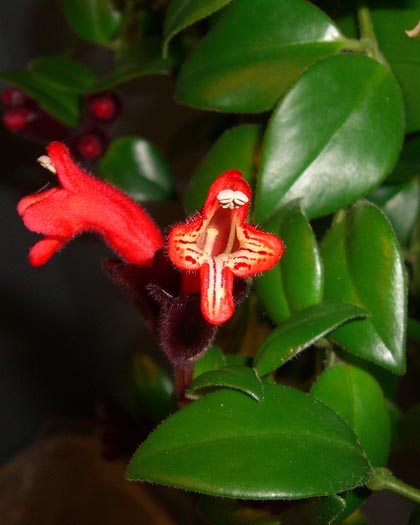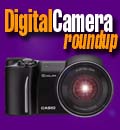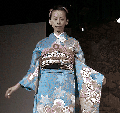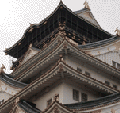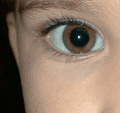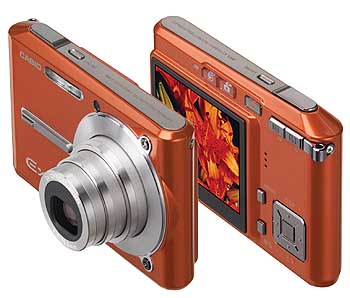 Even by Casio's high standard when it comes to creating impossibly small and jewellike digital cameras, the S500 is special. The camera is so slender, so attractive and just plain full of appeal that it's hard not to fall in love with it before you even know what it can do. And the fact that ours came in an eye-catching metallic red (which Casio calls orange) certainly didn't hurt either. It sure stood out against the army of its standard-issue silver body competitors.
Even by Casio's high standard when it comes to creating impossibly small and jewellike digital cameras, the S500 is special. The camera is so slender, so attractive and just plain full of appeal that it's hard not to fall in love with it before you even know what it can do. And the fact that ours came in an eye-catching metallic red (which Casio calls orange) certainly didn't hurt either. It sure stood out against the army of its standard-issue silver body competitors.
The Casio looks and feels smaller than any 5-megapixel digital camera has any right to be, and that's for the most part because it's so thin. We're talking 0.63 inches in its thickest part (where the LCD is) and just about half an inch everywhere else. You'd swear it was even thinner as Casio used every slenderizing trick in the book to cut down the visual size even further. Not that that was necessary. The Casio has the smallest volume of them all, and is also amomg the lightest at just 4.7 ounces, including battery and card.
Casio also went to great lengths to make sure that nothing sticks out to mar the S500's slender profile. The 3X optical zoom lens retracts completely into the camera's sliver of a body when it's off. Push the (tiny) on/off button, though, and it pops out like a fashion model's stomach when she can't hold it in anymore--almost an inch. No big deal. And neither are the two big promotional stickers that inform of all the Casio's many features. You simply peel those off.
Controls are all stylish, tiny and kept to an absolute minimum. Yet, they are clearly marked and also clearly visible. Someone did their homework at Casio. The same goes for the simple menus system that doesn't require a lengthy learning curve.
Despite their small size, Casio cameras usually offer the largest screens in their respective class. With the S500, for once that's not the case. You get a nice 2.2-inch LCD, a bit smaller than the 2.5-inchers of most of the competition. And like most of them, Casio chose to forego an optical viewfinder, a trend we do not like.
>Using the camera couldn't be simpler. Turn it on and it goes into photo mode. Push a button to review the pics. Push a button with the ubiquitous recording red dot, and you start a movie. One small glitch, perhaps, is that pushing the button starts recording rather than just getting into movie mode. There are a couple of other areas where Casio's quest to simplify actually had the opposite effect. You can't, for example, just add a sound clip to a picture. For that, sound must be enabled in the setup menu, and then you have to record sound, even if it's only a split second (you have up to 30 seconds).
Like some of the competition, Casio delivers the S500 with a cradle so you can enjoy slide shows with the camera docked--not something I anticipaate doing a lot. The cradle is necessary, too, since the S500 neither has a power jack not any I/O ports other than the docking connector. Unless you buy an optional battery charger, you can only charge the battery while the camera is docked. Likewise, if you want to connect to a PC via cable, you need the cradle.
640x480 movies are recorded at 30 frames per second using the state-of-the-art MPEG-4 spec, which means best possible quality. You can zoom in and out during recording and also during replay, and if you have a really large SD Card, you can record up to an hour and 20 minutes. The 8.3MB of internal memory won't get you very far.
Other advanced features include an anti-shake DSP, no fewer than 33 different scene settings, the ability to convert movies into snapshots, live histograms, and there's also an AF assist light for focusing in poor lighting conditions. It even has a metal tripod mount. Show-off!
Can a camera this small also take good pictures? It can, and even great ones. The S500 sometimes compensates with a bit of extra contrast and the results are very appealing. All in all, this is a delightful camera that is almost certain to please anyone who buys it. And it will always be a conversation piece to boot.

